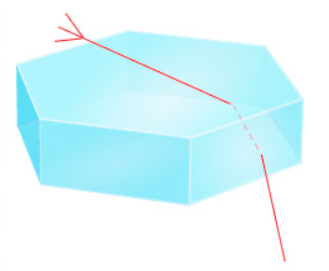Australian Arc
The Australian Arc: A Stunning Atmospheric Phenomenon
The Australian Arc, also known as the Circumzenithal Arc, is a mesmerizing atmospheric optical phenomenon that can be observed in certain parts of Australia. It is a halo made up of glints of sunlight refracted through millions of plate crystals found in high, cold cirrus clouds. This creates a stunning display of colors and shapes in the sky, leaving onlookers in awe of its beauty.
What Causes the Australian Arc?
The Australian Arc occurs when sunlight passes through ice crystals in cirrus clouds. These ice crystals act as tiny prisms, bending the light and separating it into its component colors. As a result, a vibrant arc of colors is formed, similar to a rainbow. However, unlike a traditional rainbow, the Australian Arc appears much higher in the sky, often appearing above the Sun.
How to Spot the Australian Arc
To witness the Australian Arc, you'll need to keep an eye on the sky when there are high-level cirrus clouds present. These clouds are thin and wispy and can often be seen in patches. Look for a bright arc of colors positioned above the Sun, resembling an upside-down rainbow. The colors are typically more vivid and intense than those of a traditional rainbow.
Capturing the Beauty
Photographing the Australian Arc can be a challenge due to its fleeting nature. It often appears briefly as the high-level clouds move through the sky. However, with some preparation and a bit of luck, you can capture this stunning phenomenon. Using a camera with a polarizing filter can enhance the colors and make the arc more visible in your photographs. Additionally, setting your camera to Landscape mode can help capture the wide expanse of the arc.
Other Atmospheric Optics Phenomena
While the Australian Arc is undoubtedly captivating, it is just one of many atmospheric optics phenomena that can occur in our skies. Here are a few other fascinating phenomena to keep an eye out for:
- Rainbows: A classic and well-known phenomenon, rainbows occur when sunlight is refracted and reflected by water droplets in the air, creating a circular arc of colors.
- Halos: Halos are formed when light is refracted through ice crystals in the atmosphere, resulting in a ring of light around the Sun or Moon.
- Sun Dogs: Sun Dogs, also known as parhelia, are bright spots that appear on either side of the Sun. They are caused by the refraction of sunlight through ice crystals in the atmosphere.
- Mirages: Mirages occur when light is refracted through layers of air with different temperatures, causing objects to appear distorted or displaced.
The Science Behind Atmospheric Optics
Understanding the science behind atmospheric optics can deepen our appreciation for these breathtaking phenomena. The interaction of light with particles in the atmosphere, such as water droplets and ice crystals, plays a crucial role. When light encounters these particles, it can be scattered, refracted, or reflected, leading to the formation of various optical effects.
The specific conditions required for each phenomenon to occur vary. Factors such as the size and shape of the particles, the angle of the sunlight, and the observer's position all contribute to the appearance and visibility of these optical phenomena.
Appreciating Nature's Artistry
The Australian Arc is a testament to the beauty and complexity of our natural world. It serves as a reminder that even in the most ordinary moments, extraordinary sights can unfold above us. Taking the time to observe and appreciate these atmospheric optics phenomena allows us to connect with nature and marvel at its artistry.
So, the next time you find yourself gazing at the sky, keep an eye out for the Australian Arc and other optical wonders. You never know what captivating display nature has in store for you.

Circumzenithal Arc ~ Ice crystal halo captured 26th April at Bright, Victoria, Australia by Rob Kaufman. ©Rob Kaufman, shown with permission.

"Only had a fleeting glimpse of this circumzenithal arc as a patch of wispy high level cloud moved through, but luckily the camera was on hand!
Canon 400D at 55mm, polarising filter, Landscape mode."
The halo is made up from the glints of sunlight refracted through millions of plate crystals in high, cold cirrus.

Note: this article has been automatically converted from the old site and may not appear as intended. You can find the original article here.
Reference Atmospheric Optics
If you use any of the definitions, information, or data presented on Atmospheric Optics, please copy the link or reference below to properly credit us as the reference source. Thank you!
-
<a href="https://atoptics.co.uk/blog/australian-arc/">Australian Arc</a>
-
"Australian Arc". Atmospheric Optics. Accessed on April 18, 2024. https://atoptics.co.uk/blog/australian-arc/.
-
"Australian Arc". Atmospheric Optics, https://atoptics.co.uk/blog/australian-arc/. Accessed 18 April, 2024
-
Australian Arc. Atmospheric Optics. Retrieved from https://atoptics.co.uk/blog/australian-arc/.